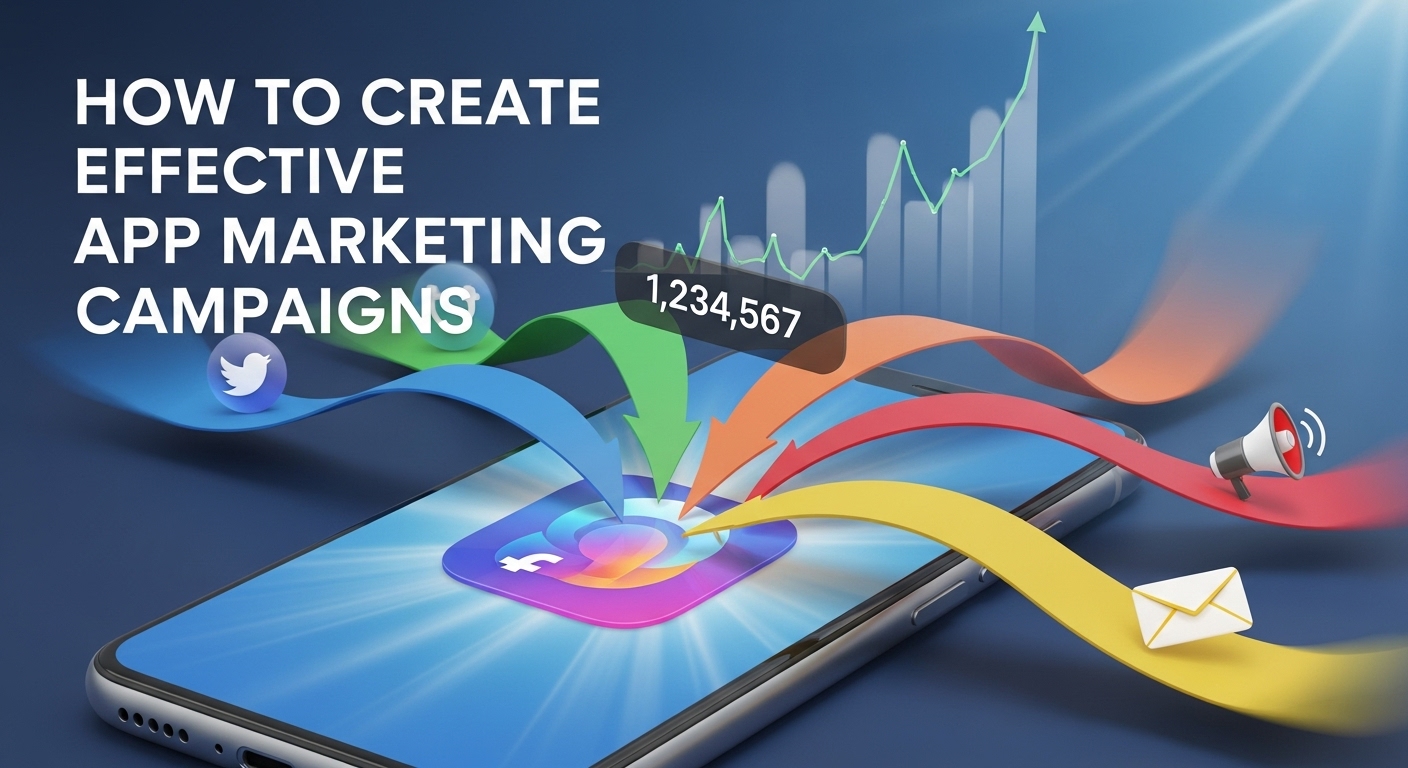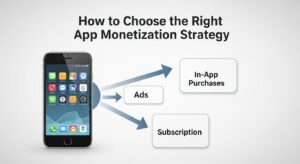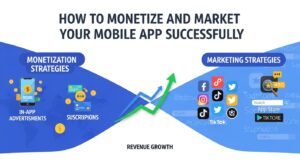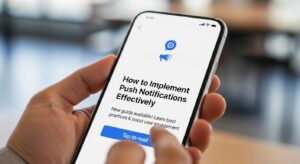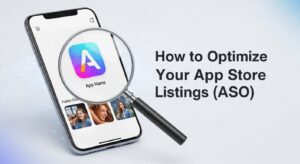Creating effective app marketing campaigns is crucial for standing out in today’s saturated mobile app marketplace. With over 5 million apps available across iOS and Android platforms, your marketing strategy can make the difference between success and obscurity.
Let’s explore the essential components that transform ordinary promotional efforts into powerful app marketing campaigns that deliver measurable results.
Understanding Your App Marketing Foundation
Before diving into campaign tactics, you need to establish a solid foundation. What specific challenges does your app solve for users? How does it differentiate from competitors? These fundamental questions shape every aspect of your marketing approach.
Your target audience research forms the cornerstone of successful app marketing campaigns. Demographics, behavioral patterns, preferred platforms, and pain points all influence how you craft your messaging and choose your channels.
Strategy 1: Master App Store Optimization (ASO)
App Store Optimization serves as the foundation for all effective app marketing campaigns. Your app’s visibility in search results directly impacts organic downloads and supports paid marketing efforts.
- Title and Keyword Optimization Your app title should include your primary keyword while remaining compelling to users. Research shows that apps with optimized titles see up to 30% more downloads than those without strategic keyword placement.
- Visual Assets That Convert Your app icon, screenshots, and preview videos must communicate value within seconds. A/B testing different visual combinations can improve conversion rates significantly.
Consider creating localized versions of your store listing for different markets. Apps with localized metadata typically see 26% higher download rates in targeted regions.
Strategy 2: Leverage Social Media for App Marketing Campaigns
Social media platforms offer diverse opportunities to showcase your app’s value proposition and build community around your brand.
- Platform-Specific Strategies Each platform requires tailored approaches. Instagram and TikTok excel for visual app demonstrations, while LinkedIn works better for B2B applications. Twitter facilitates real-time customer support and community building.
- User-Generated Content Encouraging users to share their experiences creates authentic marketing material. Apps that successfully implement user-generated content strategies often see 20% higher engagement rates.
- Influencer Partnerships Collaborating with relevant influencers can dramatically expand your reach. Micro-influencers (10K-100K followers) often deliver better engagement rates and more cost-effective campaigns than mega-influencers.
Strategy 3: Implement Performance-Driven Paid Advertising
Paid advertising accelerates user acquisition when executed strategically. The key lies in choosing the right platforms and optimizing for your specific goals.
- Search Ads and App Store Advertising Both Apple Search Ads and Google Ads for mobile apps allow you to target users actively searching for solutions your app provides. These tend to deliver higher-quality users with better retention rates.
- Social Media Advertising Facebook and Instagram ads offer sophisticated targeting options based on interests, behaviors, and demographics. Video ads showcasing app functionality typically outperform static images.
- Retargeting Campaigns Implementing retargeting campaigns helps re-engage users who showed initial interest but didn’t complete the download or registration process.
Strategy 4: Content Marketing for App Promotion
Content marketing builds awareness, demonstrates expertise, and improves search engine visibility for app-related keywords.
- Blog Content Strategy Create valuable content addressing problems your app solves. How-to guides, industry insights, and case studies establish authority while naturally incorporating app marketing campaigns keywords.
- Video Marketing Tutorial videos, behind-the-scenes content, and user testimonials perform exceptionally well for app promotion. Video content receives 1200% more shares than text and images combined.
- Email Marketing Integration Email sequences can nurture leads through the download and onboarding process. Personalized email campaigns see 26% higher open rates and significantly better conversion rates.
Strategy 5: Build Strategic Partnerships
Partnership marketing extends your reach through complementary businesses and platforms.
- Cross-Promotion Opportunities Partner with non-competing apps that serve similar audiences. Cross-promotional campaigns can reduce user acquisition costs while expanding market reach.
- Integration Partnerships Technical integrations with popular platforms can drive organic growth. Apps that integrate with widely-used services often see sustained user growth without additional marketing spend.
- Press and Media Relations Securing coverage in relevant publications builds credibility and drives downloads. Focus on publications your target audience trusts and follows.
Partnership Type | Benefits | Implementation Time | Cost |
Cross-Promotion | Low cost, targeted reach | 2-4 weeks | Low |
Integration Partners | Organic growth, credibility | 6-12 weeks | Medium |
Media Relations | High credibility, broad reach | 4-8 weeks | Variable |
Strategy 6: Optimize User Onboarding and Retention
Acquiring users represents only half the equation. Retaining them maximizes your marketing investment and creates advocates for organic growth.
- First-Time User Experience Your onboarding process should demonstrate core value within the first session. Apps that effectively communicate value during onboarding see 50% better retention rates.
- Progressive Engagement Gradually introduce advanced features to avoid overwhelming new users. Progressive disclosure techniques help users discover functionality at their own pace.
- Push Notification Strategy Well-timed, relevant push notifications can increase engagement by 88%. However, poorly executed notifications drive uninstalls, so testing and personalization are essential.
Strategy 7: Measure, Analyze, and Iterate
Successful app marketing campaigns require continuous optimization based on data-driven insights.
- Key Performance Indicators Track metrics that matter: cost per install (CPI), lifetime value (LTV), retention rates, and return on ad spend (ROAS). These metrics reveal campaign effectiveness and guide optimization decisions.
- Attribution and Analytics Implement robust tracking to understand which channels drive the highest-quality users. Tools like AppsFlyer, Adjust, or Branch provide comprehensive attribution data for optimization.
- A/B Testing Framework Continuously test different approaches across all marketing channels. From ad creative to app store screenshots, systematic testing improves performance over time.
Advanced Tactics for Scaling App Marketing Campaigns
Once you’ve mastered the fundamentals, advanced tactics can accelerate growth and improve efficiency.
- Lookalike Audiences Create lookalike audiences based on your highest-value users to find similar prospects on social platforms. This approach often reduces acquisition costs while maintaining user quality.
- Seasonal Campaign Optimization Align your marketing efforts with seasonal trends and events relevant to your app category. E-commerce apps might focus on holiday shopping, while fitness apps could emphasize New Year resolutions.
- Referral Program Implementation Well-designed referral programs turn existing users into acquisition channels. Apps with successful referral programs see 16% higher lifetime value among referred users.
Budget Allocation and Resource Management
Effective resource allocation maximizes your marketing impact across all channels.
- Channel Mix Optimization Diversify your marketing spend across multiple channels to reduce risk and maximize reach. The optimal mix varies by app category and target audience, but most successful campaigns utilize 3-5 primary channels.
- Testing Budget Strategy Allocate 20-30% of your budget to testing new channels and tactics. This approach ensures you discover new growth opportunities while maintaining proven performers.
Common Pitfalls in App Marketing Campaigns
Understanding common mistakes helps you avoid costly errors and accelerate success.
- Neglecting Post-Install Engagement Many marketers focus exclusively on installs while ignoring user engagement and retention. This approach leads to high churn rates and poor unit economics.
- Insufficient Market Research Launching campaigns without thorough competitor analysis and market understanding often results in ineffective messaging and poor channel selection.
- Over-Reliance on Single Channels Depending too heavily on one acquisition channel creates vulnerability to algorithm changes, policy updates, or increased competition.
Future Trends in App Marketing
Staying ahead of trends ensures your app marketing campaigns remain effective as the landscape evolves.
- Privacy-First Marketing With iOS 14.5+ privacy changes and increased data protection regulations, first-party data collection and privacy-compliant marketing strategies become increasingly important.
- AI and Machine Learning Integration Automated bid optimization, predictive analytics, and personalized user experiences powered by AI will differentiate successful campaigns from basic promotional efforts.
- Connected TV and Audio Advertising As users spend more time on streaming platforms, CTV and audio advertising present new opportunities for app promotion, particularly for entertainment and lifestyle categories.
For comprehensive mobile marketing insights, explore resources from Mobile Marketing Association and industry-leading platforms like AppsFlyer for attribution and analytics best practices.
Creating effective app marketing campaigns requires strategic planning, consistent execution, and continuous optimization. By implementing these seven proven strategies while avoiding common pitfalls, you’ll build marketing campaigns that not only drive downloads but also create sustainable, profitable growth for your mobile application.
Success in app marketing campaigns comes from understanding your audience deeply, choosing the right mix of channels, and relentlessly optimizing based on performance data. Start with strong foundations, scale what works, and always keep your users’ needs at the center of your marketing strategy.

